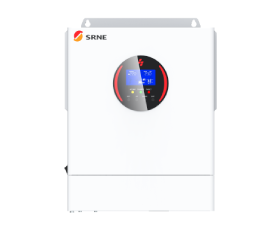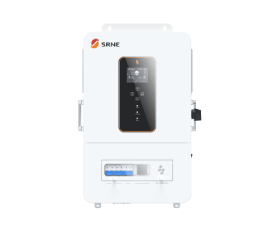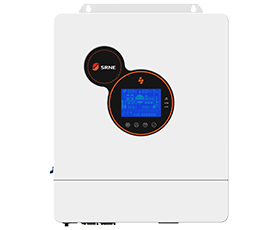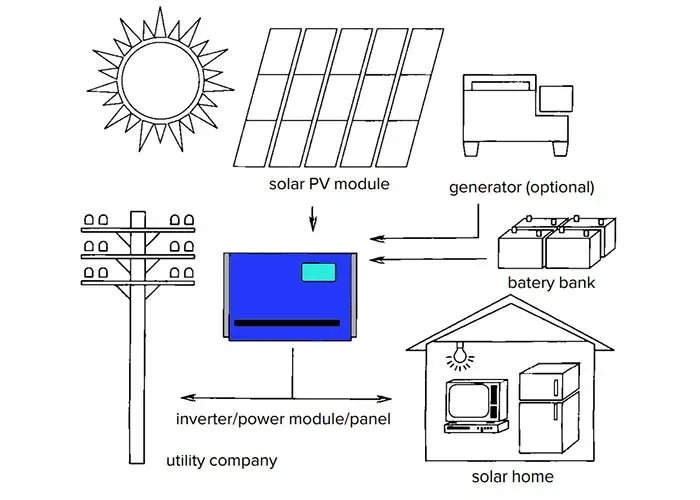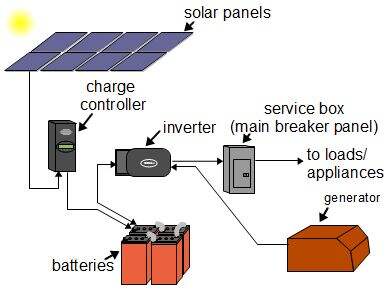Achieving Self-Sufficiency with Home Power Inverters
As energy costs rise and environmental concerns grow, more homeowners are seeking ways to achieve energy self-sufficiency. Integrating renewable energy sources like solar panels with home power inverters is an effective solution. SRNE, a leading solar inverter manufacturer, provides a range of options, including solar power inverters for home use, helping individuals reduce their dependence on the grid.
Understanding Home Power Inverters
A home power inverter is a device that converts the direct current (DC) generated by solar panels into alternating current (AC) used by household appliances. There are different types of inverters available, including pure sine wave and modified sine wave inverters. Pure sine wave inverters are generally preferred for their efficiency and compatibility with a wide range of devices.
Types of Inverters
Pure Sine Wave Inverters: These inverters produce a smooth and consistent power output, ideal for sensitive electronics.
Modified Sine Wave Inverters: These are more affordable but less efficient, suitable for basic applications.
Benefits of Reducing Dependence on the Grid
Cost Savings
By using a solar power inverter for home, homeowners can significantly reduce their electricity bills. Generating your own power means less reliance on utility companies and protection from fluctuating energy prices.
Environmental Impact
Switching to renewable energy sources helps reduce your carbon footprint. Using a solar inverter, such as our 5kw solar inverter, supports a cleaner, greener planet.
Energy Independence
Home power inverters provide reliability, especially during power outages. With a properly configured system, you can ensure continuous power supply, enhancing your home’s resilience.
Setting Up a Home Power Inverter System
Essential Components
Setting up a home power inverter system involves several key components:
lSolar Panels: Capture sunlight and convert it into electrical energy.
lBatteries: Store excess energy for use when sunlight is not available.
lInverters: Convert DC from the panels and batteries to AC for home use.
Installation Process
Site Assessment and Planning: Evaluate your home’s energy needs and the available space for solar panels.
Selecting Equipment: Choose the right solar panels, batteries, and inverters. An all in one solar inverter can simplify the setup process.
Installation: Decide whether to hire professionals or opt for a DIY approach. Professional installation ensures optimal performance and safety.
Maintenance and Upkeep
Regular maintenance, including cleaning the solar panels and checking connections, ensures the longevity and efficiency of your system.
Necessary Equipment for a Home Power Inverter System
Solar Panels
Select high-efficiency panels that match your energy requirements. The type and number of panels depend on your location and energy consumption.
Battery Storage
Choose between lead-acid and lithium-ion batteries. Lithium-ion batteries are more expensive but offer longer lifespan and better performance.
Inverters
The inverter is the heart of your system. Our small solar inverter models are perfect for smaller setups, while the 5kw solar inverter is ideal for larger homes. Ensure you choose an inverter with the appropriate capacity and features.
Monitoring Systems
Modern systems come with monitoring software to track energy production and consumption, helping you optimize performance and troubleshoot issues.
Conclusion
Achieving energy self-sufficiency with home power inverters is not only feasible but also highly beneficial. By reducing dependence on the grid, you can enjoy cost savings, environmental benefits, and energy independence. With SRNE’s range of products, including solar power inverters for home, 5kw solar inverters, and small solar inverters, you can find the perfect solution to meet your energy needs.
Frequently Asked Questions (FAQs)
How long does it take to install a home power inverter system?
The installation process can vary from a few days to a few weeks, depending on the complexity of the system and whether you hire professionals.
What if my inverter stops working?
Regularly check connections and refer to the user manual. Contact our support team for assistance if needed.
How do I choose the right solar inverter manufacturer?
Look for a manufacturer with a strong reputation for quality and reliability. SRNE offers a range of solar power inverters for home, including the 5kw solar inverter and small solar inverter models, backed by excellent customer support.
Can I use an all in one solar inverter for my setup?
Yes, an all in one solar inverter can simplify your system by combining multiple functions into one device, making installation and maintenance easier.
References and Further Reading
For more detailed guides and professional advice, visit our website or contact our customer service. Explore government incentives and support programs to make your transition to renewable energy even more affordable.

































